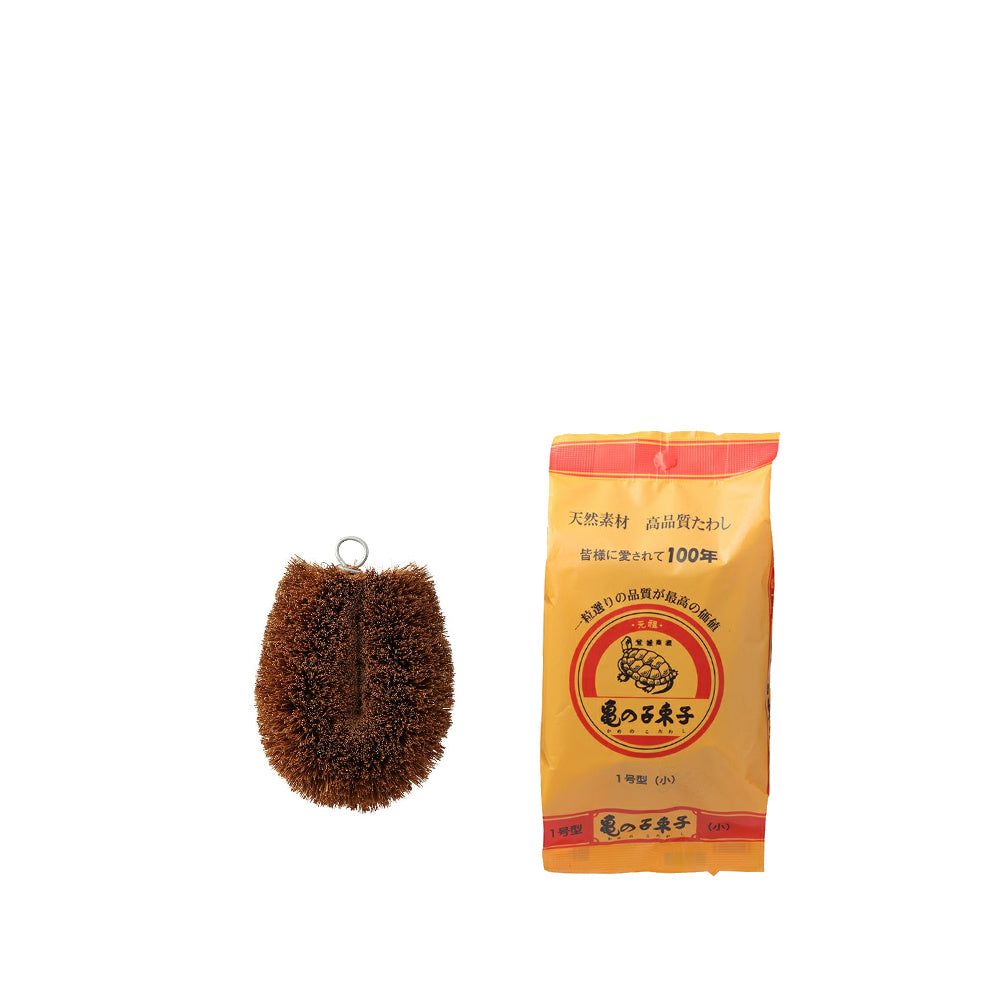
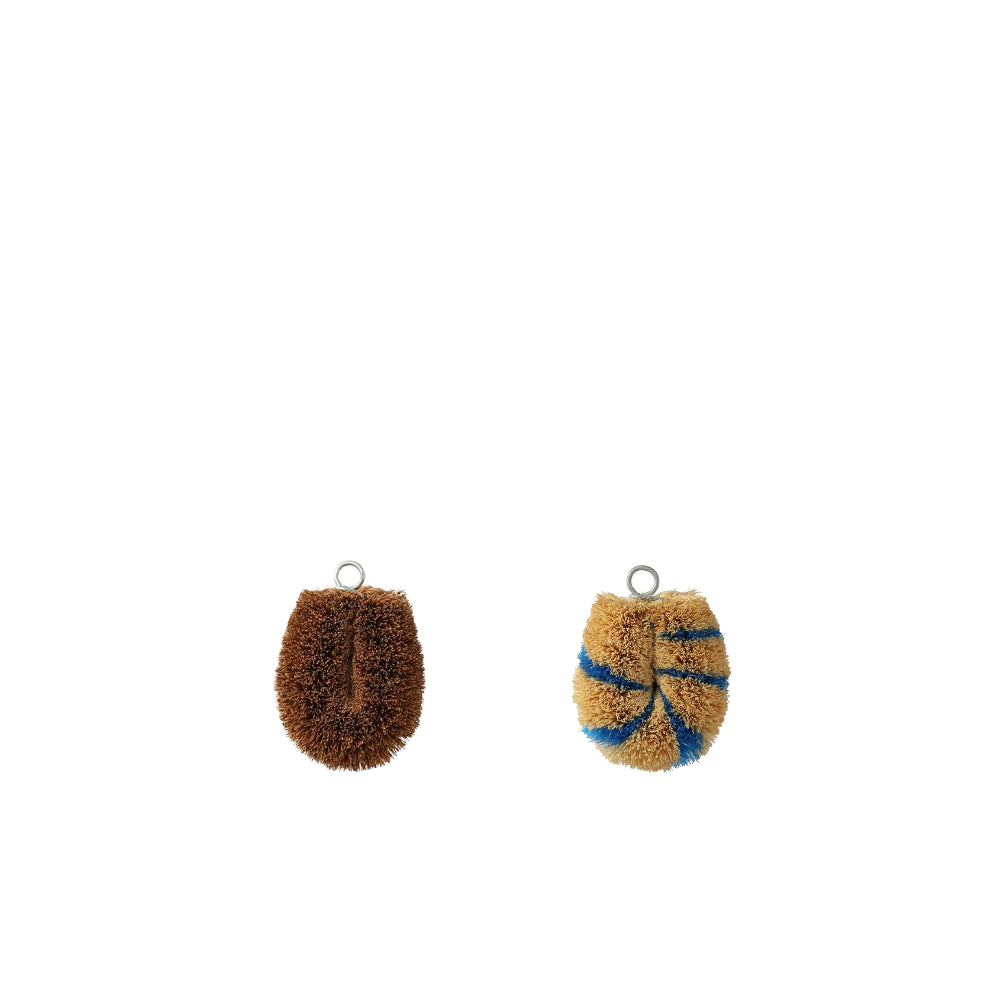
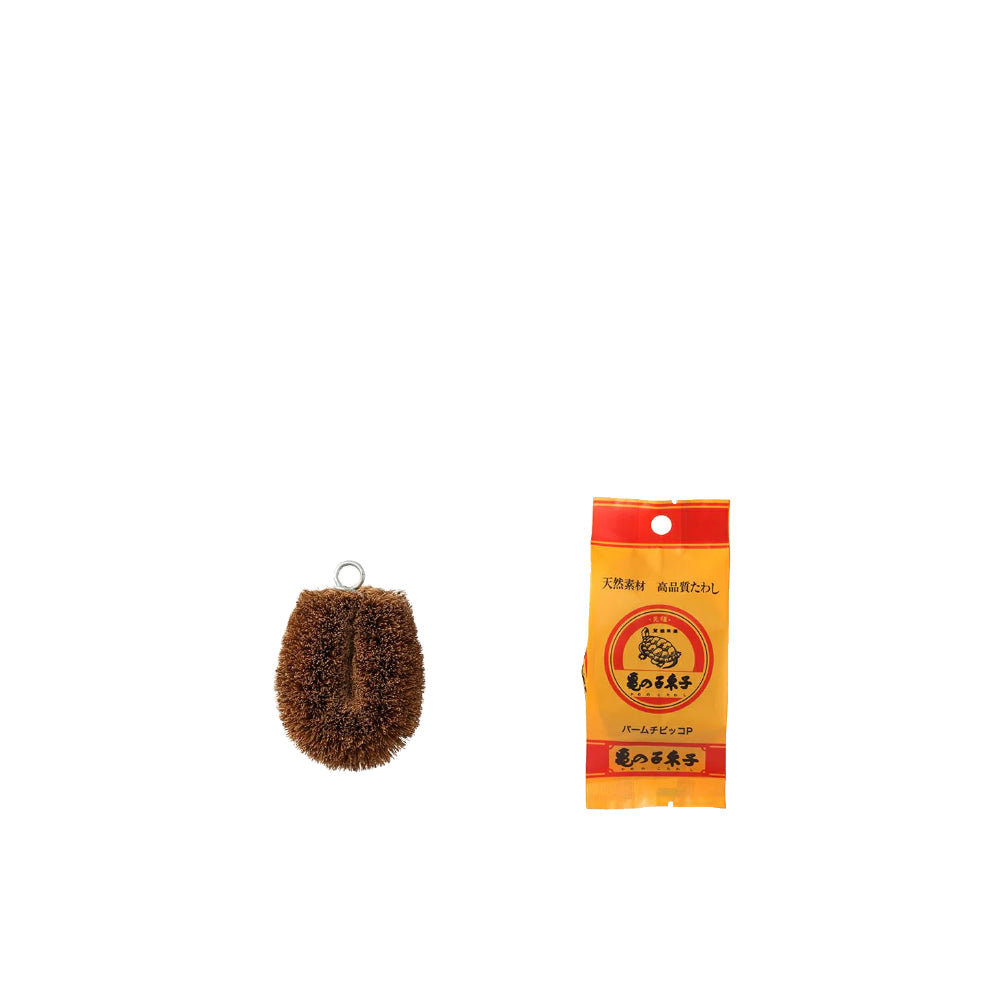
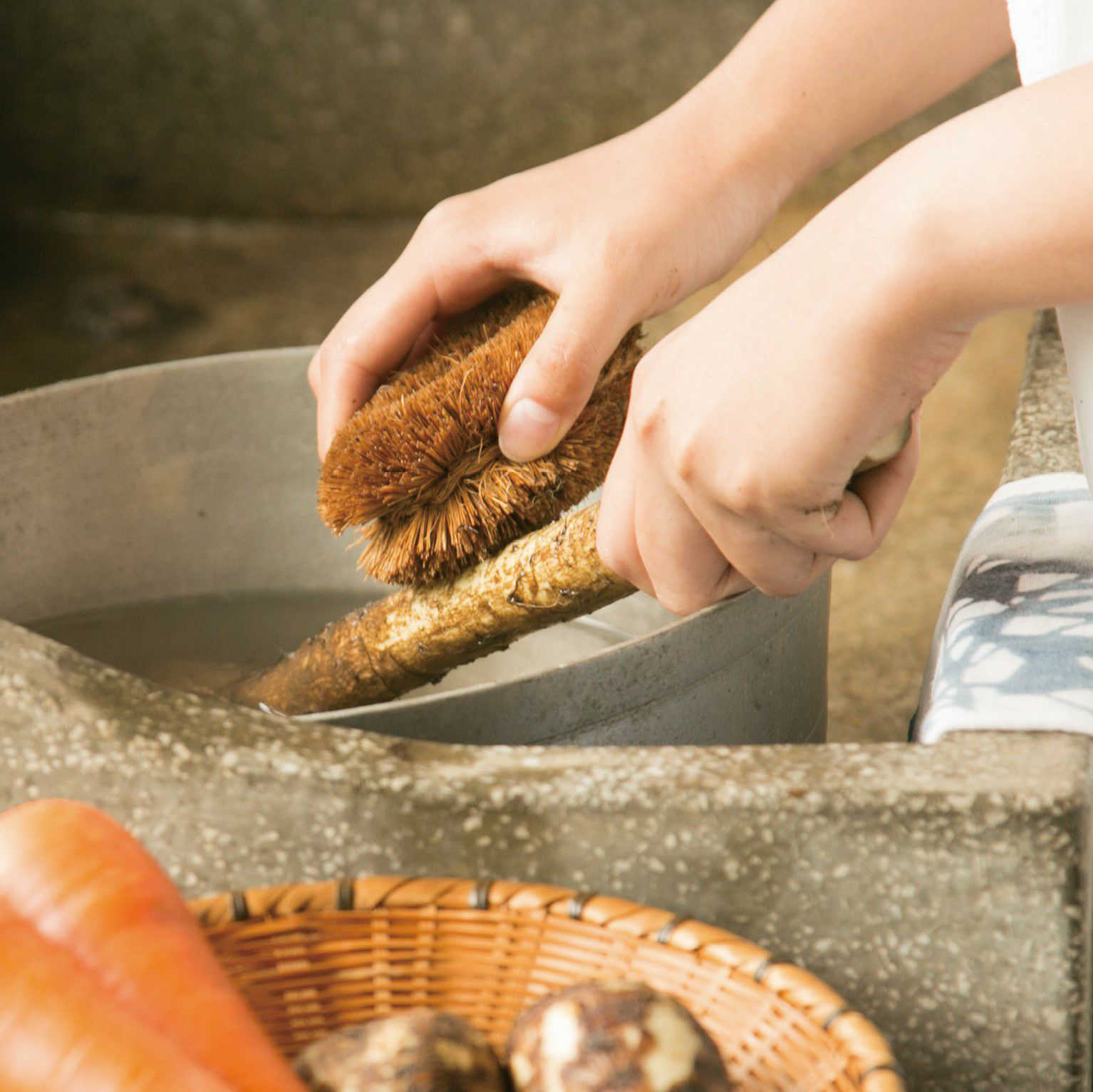
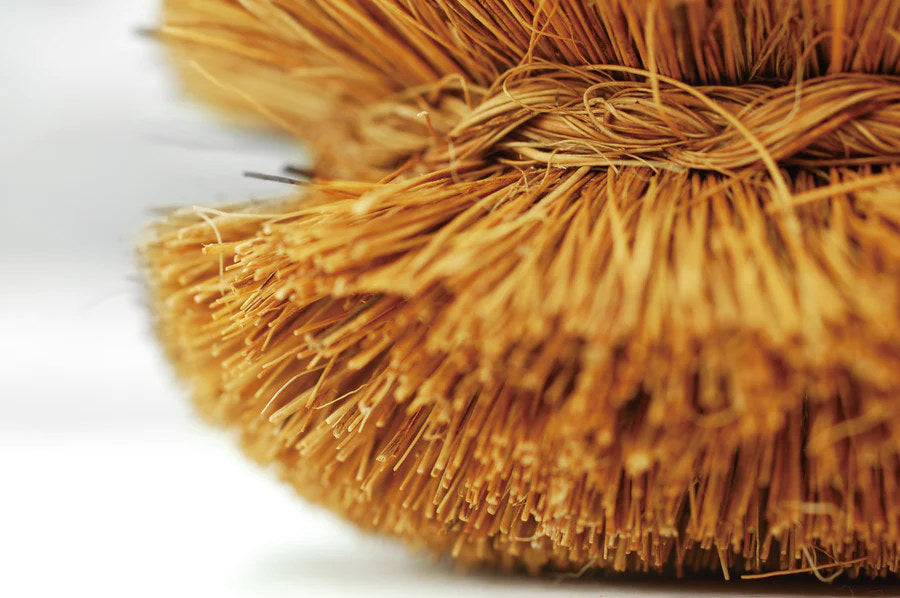
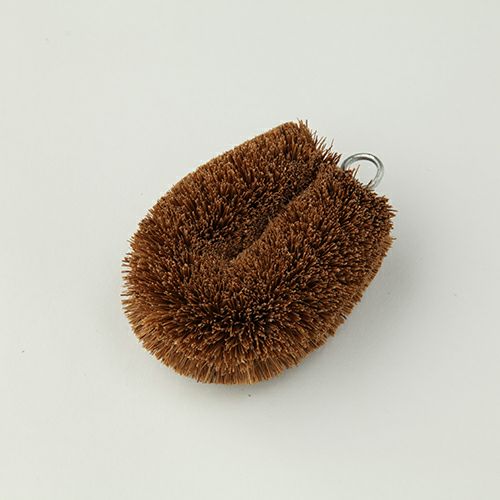
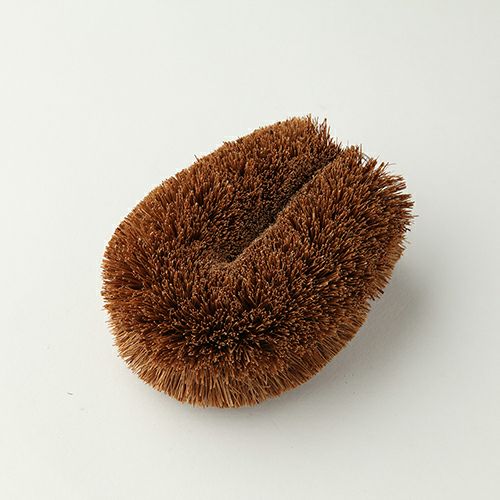
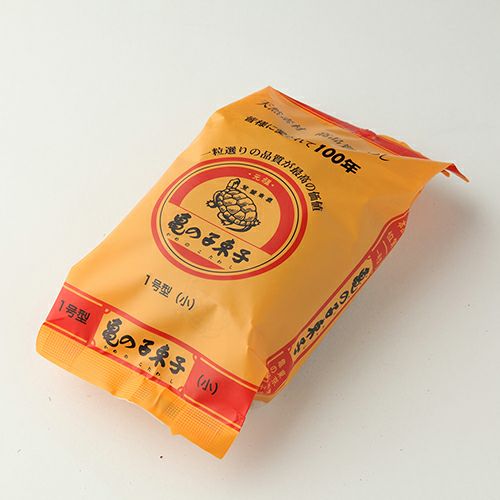
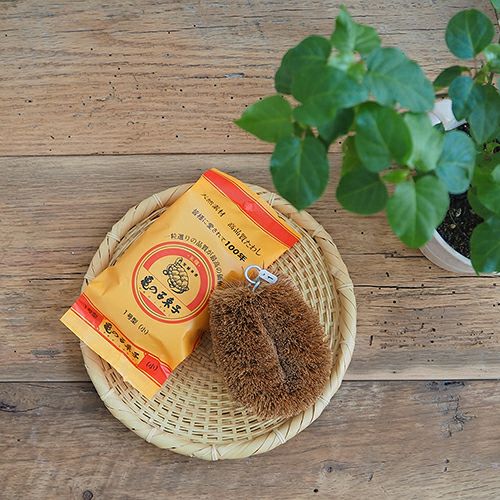
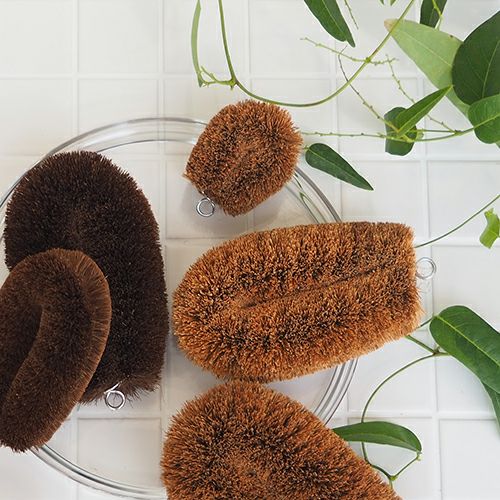
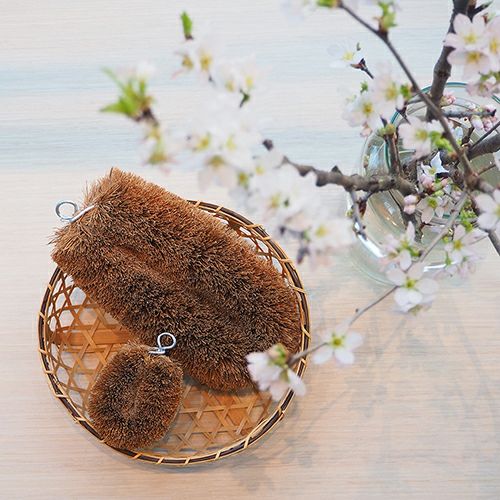
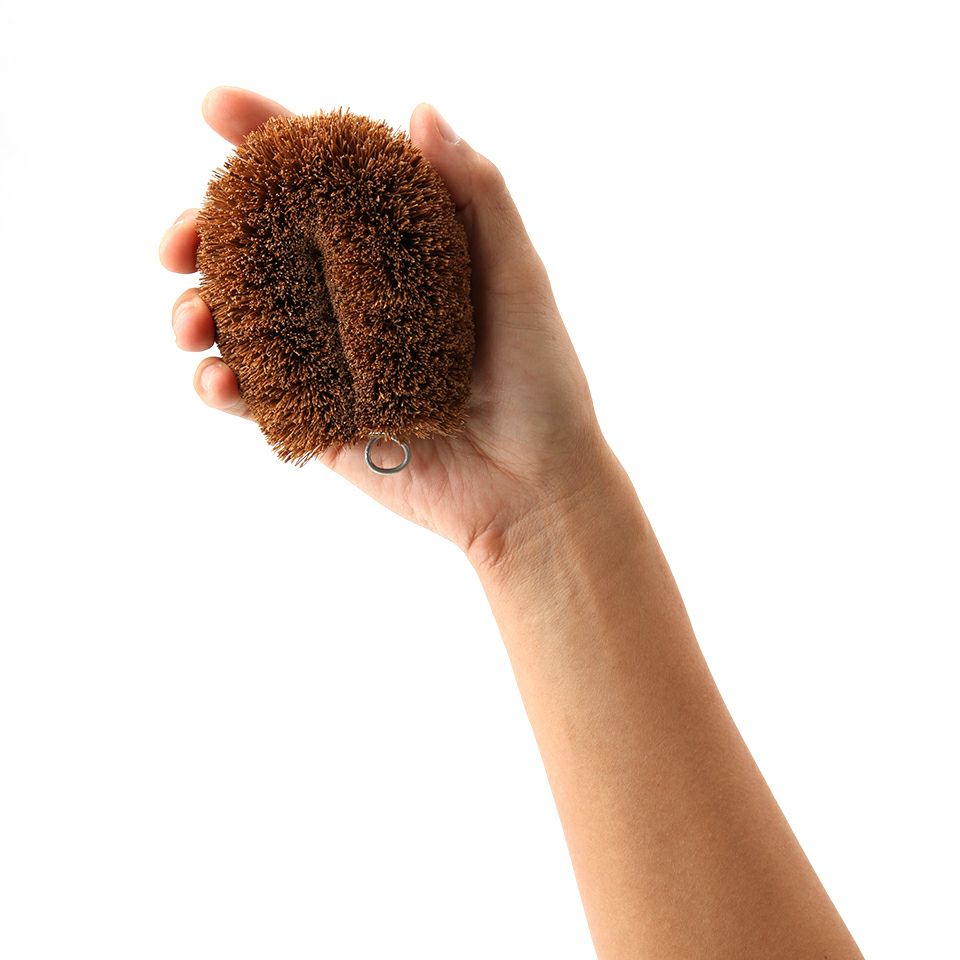
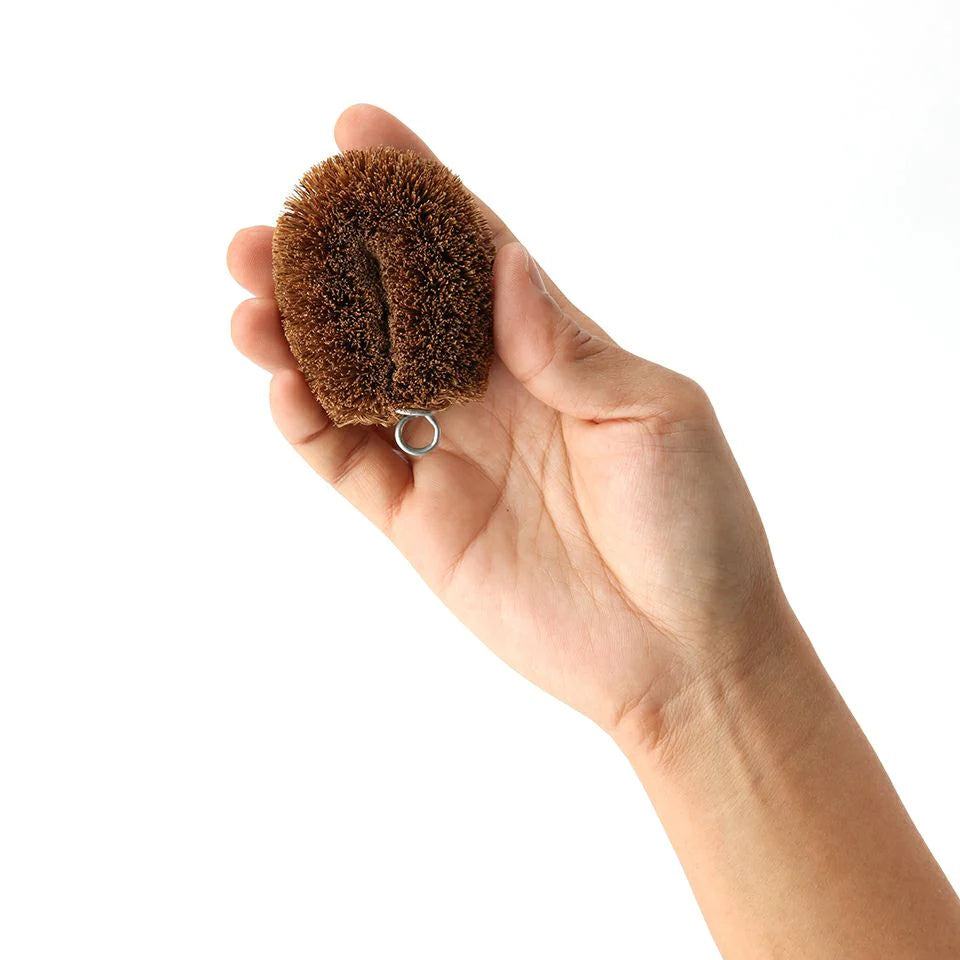
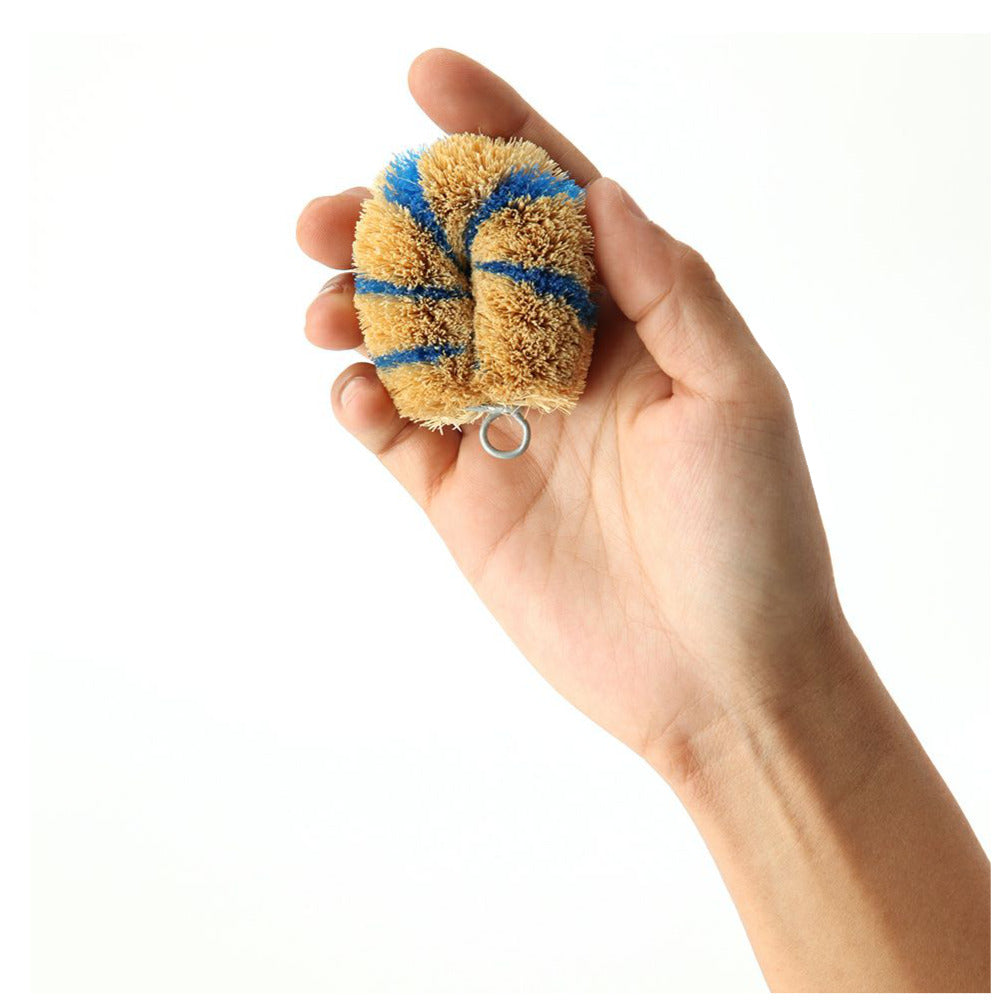
Pinceau Tawashi en noix de coco
Pinceau Tawashi en noix de coco
Cocotier - Type dur
BOWS & ARROWS Store
17 Rue Notre Dame de Nazareth
Tue to Sat, from 12h30pm to 7h30pm
75003 Paris
France
- Pour laver, brosser et frotter : les tawashi sont des outils polyvalents bio
- Légumes : lavez vos légumes avec le tawashi afin de ne pas retirer tous les nutriments de la peau de vos légumes
- Ustensiles de cuisine : article essentiel pour les chefs japonais qui l'utilisent pour nettoyer les légumes et laver les planches à découper en bois, les ustensiles de cuisine et la vaisselle
- Pour les plats non gras, vous pouvez facilement les nettoyer sans utiliser de liquide vaisselle
- Kamenoko a inventé la forme de brosse tawashi en 1907 et c'est une brosse à récurer écologique qui est essentielle dans la cuisine japonaise
- La plupart des gens qui les essaient une fois ne peuvent pas imaginer une cuisine sans eux.
Nous gardons généralement au moins deux tawashi. Un pour les légumes, car la plupart des nutriments se trouvent dans la peau et un simple frottement permet de conserver les nutriments. Le tawashi enlève la saleté de la plupart des légumes-racines comme les carottes, les betteraves, les pommes de terre, etc. L'autre est utilisé pour laver les casseroles, la vaisselle et la vaisselle, ainsi que de nombreux autres objets de la maison.
Tawashi en fibre de coco = Gommage
Lorsque vous souhaitez éplucher entièrement la peau d'un légume (exemple : carotte, pomme de terre, etc), le type « Coconut Husk PALM » est recommandé.
Grâce à la dureté modérée de la tête de la fibre, le point fort du matériau de la paume lors du lavage est de gratter la saleté. Il est adapté pour éliminer la saleté et la peau fine des légumes-racines, ainsi que la saleté qui pénètre dans les mailles de la passoire. D'un autre côté, la résistance de la fibre la rend inadaptée aux matériaux délicats, nous recommandons donc d'avoir un autre « tawashi plus doux » pour les légumes à peau plus douce.
La fibre de coco lave avec ses « pointes ». Grâce à son toucher dur et ferme, elle enlève les taches et la graisse sans laisser de traces, elle est parfaitement conçue pour frotter les objets et joue un rôle important dans le nettoyage de la maison. Nous vous suggérons d'éviter les surfaces enduites car sa résistance peut laisser des éraflures sur la surface.
Développé avec une taille facile à tenir dans la main, le Type 1 est un bijou traditionnel depuis sa création. La raison pour laquelle il est apprécié depuis de nombreuses années est la qualité fiable de l'utilisation généreuse de fibres de coco soigneusement sélectionnées. Convient pour éliminer la boue des légumes-racines, éplucher les peaux fines et laver les ustensiles de cuisine tels que les poêles à frire en fer et les passoires.
La différence de taille dépend de la taille de la paume de votre main
Dimensions : 8 x 4,8 x 10 cm
Matériau : Palmier (fibre de coco), fil galvanisé
Température de résistance à la chaleur : 90 degrés
Fabriqué au Japon

Tawashi au cocotier blanc = Gommage
Ce type de tawashi est également un standard et un favori car il est facile à utiliser grâce à sa forme qui permet une prise ferme. Les côtés n'ont pas de pli, ce qui vous permet de nettoyer facilement vos légumes ou vos plats.

Pour en savoir plus sur les autres types de Tawashi, veuillez continuer à lire :
Il existe 3 types de matériaux et la différence réside dans la dureté. Par exemple, pour laver les légumes, il existe 3 types de matériaux :
Palmier à chanvre TAWASHI = Brosser
Si vous souhaitez conserver et manger la peau de la carotte, nous vous recommandons le « HEMP PALM ». Le chanvre palm est un produit polyvalent pour le lavage car il est à la fois résistant et souple.
Grâce à ces propriétés, il élimine la saleté. Le palmier de chanvre est également utilisé dans un balai, ce qui est efficace pour éliminer la saleté.
La pointe fine d'une fibre peut pénétrer dans un très petit espace, c'est pourquoi de nombreux chefs choisissent une brosse à récurer en palmier de chanvre pour laver leur planche à découper en bois.
Il est très pratique d'avoir une brosse à récurer en palmier de chanvre dans votre cuisine. Elle peut être utilisée pour laver en douceur les ingrédients, vos ustensiles de cuisine essentiels ou les ustensiles de cuisine en acier inoxydable.

Kiwamé
La série Kiwame est fabriquée à partir de peau de palmier de chanvre qui recouvre le tronc. La paume de chanvre est plus douce que la paume, ce qui en fait un match parfait avec un couteau et une planche à découper en bois.
Vous pouvez laver la vaisselle, le téflon, le verre, l'acier inoxydable, l'émail et plus encore.

Lin en sisal TAWASHI = Lavage
Le sisal utilise sa fibre douce pour éliminer les saletés. Il convient aux soins du corps et même aux poêles à revêtement délicat. Lorsqu'il est mouillé, ce matériau devient plus doux.
Lorsque vous souhaitez simplement laver la peau d'un objet délicat comme une pomme ou un citron, utilisez le type « SISAL LIN ».

Comment nous utilisons Kamenoko :
Commencez avec votre nouveau Kamenoko. Nous l'utilisons pour laver la peau de nos légumes. Étant donné que la plupart des nutriments se trouvent à l'intérieur de la peau, le tawashi est la brosse parfaite pour nettoyer délicatement la saleté de votre légume avant de l'utiliser.
Après quelques mois ou lorsque vous sentez qu'il ne frotte pas comme vous le souhaitez, le tawashi kamenoko passe à sa prochaine tâche de lavage de vos casseroles et poêles. Les tawashi sont l'outil parfait pour nettoyer tous les plats, mais particulièrement les casseroles en fer qui ne doivent pas être rayées avec un tampon en acier ou une éponge non organique. Il en va de même pour frotter les aliments de vos assiettes. L'organique les fibres du tawashi ne rayent pas votre vaisselle.
Enfin, lorsque votre tawashi Kamenoko ne peut plus être utilisé en cuisine, vous pouvez utiliser le tawashi pour les travaux ménagers :
- nettoyer la douche ou la salle de bain
- nettoyer la saleté sur le sol
- nettoyer vos outils
- nettoyer tout ce à quoi vous pouvez penser
Enfin, lorsque vos Kamenoko tawashi auront été entièrement utilisés, nous pourrons les remercier pour tous leurs services et les laisser prendre leur retraite en toute tranquillité. Ils sont fabriqués à partir de fibres organiques afin de pouvoir retourner naturellement dans la terre et le fil métallique peut être recyclé.
Comment nettoyer Kamenoko :
La meilleure façon de nettoyer les Kamenoko est d'utiliser simplement deux Kamenoko pour se nettoyer l'un l'autre. Secouez-les pour les sécher et suspendez-les après utilisation. Comme elles sèchent rapidement, elles ne génèrent pas de germes comme le font les éponges ordinaires.
Pour désinfecter votre Tawashi, vous pouvez verser de l'eau chaude dessus. Nous lavons généralement notre tawashi et nos planches à découper en bois ensemble en versant simplement Eau à 90° pour désinfecter sans produits chimiques. Un tawashi se conserve généralement environ 1 an avec un entretien approprié.
Pourquoi Kamenoko Tawashi ?
Il existe aujourd'hui de nombreux producteurs qui fabriquent du Tawashi, mais Kamenoko est l'original. C'est pourquoi tous leurs Tawashi sont soigneusement fabriqués à la main et inspectés par des artisans expérimentés. Vous pouvez constater la qualité de l'artisanat dès la première utilisation de Kamenoko.
Histoire du Tawashi :
Lorsque les chaussures occidentales ont commencé à être vendues au Japon, contrairement aux sabots japonais en bois, les chaussures occidentales apportaient beaucoup de saleté de l'extérieur. Il était donc nécessaire pour les ménages d'avoir un paillasson pour empêcher la saleté extérieure de pénétrer dans la maison. Le fondateur et premier président, Nishio Shozaemon, produisait des tapis en chanvre et en palmier.
A cette époque, au Japon, nous utilisions encore des poêles à bois dans la cuisine. Le bois et le charbon de bois noircissaient les casseroles et les poêles et étaient difficiles à nettoyer. La femme de M. Shozaemon prit un de ses paillassons, le coupa et plaça un fil de fer autour pour l'utiliser pour frotter. C'est ainsi qu'est née la première brosse Tawashi. Ils s'accordèrent sur le fait que sa forme ressemblait à celle d'une tortue (Kame en japonais) et que, comme les tortues aiment l'eau, ce nom leur semblait approprié. Kamenoko signifie « Enfant Tortue ».
M. Depuis 1907, ils créent et commercialisent le « TAWASHI ». Depuis, ils ont créé de nombreux produits d’entretien pour les travaux ménagers.
En 2013, cette brosse obtient le Long Life Design Award en tant que produit majeur fabriqué à la main depuis 1907. Qualité, durabilité : choisissez la meilleure taille pour la paume de votre main.

